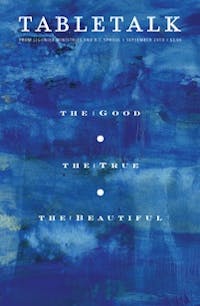
Request your free, three-month trial to Tabletalk magazine. You’ll receive the print issue monthly and gain immediate digital access to decades of archives. This trial is risk-free. No credit card required.
Try Tabletalk NowAlready receive Tabletalk magazine every month?
Verify your email address to gain unlimited access.
The nineteenth century witnessed the conversions of two prominent Anglican clergymen to Roman Catholicism. Both men would ultimately become cardinals in the Roman Church, and both men would profoundly influence Roman Catholic theology. The first was John Henry Newman (1801–1890). The second was Henry Edward Manning (1808–1892). Newman is probably most well known for his involvement in the high church Oxford Movement and for his Essay on the Development of Christian Doctrine (1845). Manning is best known for his advocacy of social justice and for his strong support of the doctrine of papal infallibility following his conversion to Rome. He played a key role in the First Vatican Council (1869–1870).
What I find most interesting about these two men is their approach to history and what it tells us about the Roman Catholic Church. Cardinal Newman famously said, “To be deep in history is to cease to be a Protestant.” He believed that if one compared the teaching and practice of both Protestantism and Rome to the teaching and practice of the early church, one would be forced to conclude that Rome was the true heir of the early church. Of course, he had to posit a rather complex theory of doctrinal development in order to make such an idea plausible to himself and others not already inclined to agree. But be that as it may, Newman believed that the study of history supported the claims of Rome.
Cardinal Manning, on the other hand, claimed that for a Roman Catholic, “the appeal to antiquity is both a treason and a heresy” and that “the only divine evidence to us of what was primitive is the witness and voice of the Church at this hour” (The Temporal Mission of the Holy Ghost). In other words, to examine church history in order to find support for the claims of Rome is to demonstrate a lack of faith in the Church of Rome. It is to place human reason over and above faith. If you want to know what the early church taught, all you have to do is look at what the Roman Catholic Church teaches today.
The Roman Catholic theologian Walter Burghardt expresses the same view in connection with the doctrine of the Assumption of Mary, which was defined as dogma in 1950:
“A valid argument for a dogmatic tradition, for the Church’s teaching in the past can be constructed from her teaching in the present. And that is actually the approach theology took to the definability of the assumption before 1st November 1950. It began with a fact: the current consensus, in the Church teaching and in the Church taught, that the Corporeal Assumption was revealed by God. If that is true, if that is the teaching of the magisterium of the moment, if that is the Church’s tradition, then it was always part and parcel of the Church’s teaching, part and parcel of tradition.”
Manning and Burghardt are simply being consistent with belief in the infallibility of Rome and of the pope. If the church is infallible, appeals to history, tradition, and Scripture are superfluous. What the church teaches now must be what the church has always taught, regardless of what the actual evidence from Scripture and/or tradition might say.
Rome truly has no other choice if she wishes to maintain her current beliefs and practices. If she were to appeal to something like the Vincentian Canon (namely, that the true faith, the true interpretation of Scripture, is that which has been believed everywhere, always, and by all), the pope would have to give up all claims to supremacy over the entire church, and the bulk of Roman peculiarities and practice would have to be jettisoned.
Cardinal Newman recognized the obvious difference between the current Roman Church and the early church. He was too deep in history not to see it. He had to develop his famous idea of doctrinal development to explain it. He argued that all the later Roman doctrines and practices were “hidden” in the church from the beginning. They were made explicit over time under the guidance of the Spirit. But the problem that many Roman Catholics fail to see is that there is a difference between development and contradiction. It is one thing to use different language to teach something the church has always taught (e.g., the “Trinity”). It is another thing altogether to begin teaching something that the church always denied (e.g., papal supremacy or infallibility). Those doctrines in particular were built on multitudes of forgeries.
Cardinal Manning solved the problem by treating any appeal to history as treason. He called for blind faith in the papacy and magisterium. Such might have been possible had the fruits of the papacy over 1,500 years not consistently been the precise opposite of the fruit of the Spirit (Matt. 7:16).
Cardinal Newman said that to be deep in history is to cease to be a Protestant. The truth is that to be deep in real history, as opposed to Rome’s whitewashed, revisionist, and often forged history, is to cease to be a Roman Catholic.
